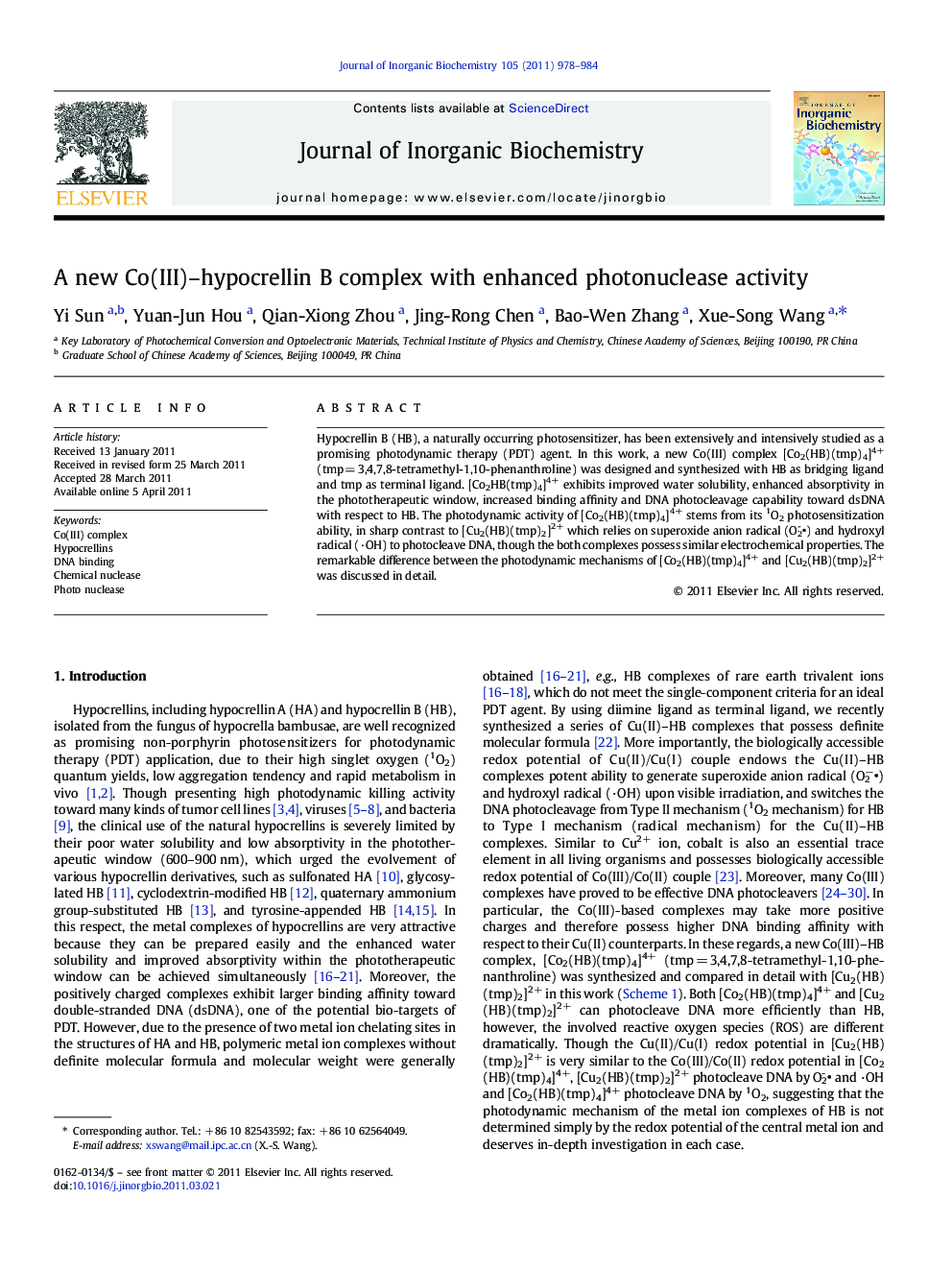| Article ID | Journal | Published Year | Pages | File Type |
|---|---|---|---|---|
| 1316184 | Journal of Inorganic Biochemistry | 2011 | 7 Pages |
Hypocrellin B (HB), a naturally occurring photosensitizer, has been extensively and intensively studied as a promising photodynamic therapy (PDT) agent. In this work, a new Co(III) complex [Co2(HB)(tmp)4]4+ (tmp = 3,4,7,8-tetramethyl-1,10-phenanthroline) was designed and synthesized with HB as bridging ligand and tmp as terminal ligand. [Co2HB(tmp)4]4+ exhibits improved water solubility, enhanced absorptivity in the phototherapeutic window, increased binding affinity and DNA photocleavage capability toward dsDNA with respect to HB. The photodynamic activity of [Co2(HB)(tmp)4]4+ stems from its 1O2 photosensitization ability, in sharp contrast to [Cu2(HB)(tmp)2]2+ which relies on superoxide anion radical (O2-) and hydroxyl radical (·OH) to photocleave DNA, though the both complexes possess similar electrochemical properties. The remarkable difference between the photodynamic mechanisms of [Co2(HB)(tmp)4]4+ and [Cu2(HB)(tmp)2]2+ was discussed in detail.
Graphical abstractA new dinuclear Co(III) complex [Co2(HB)(tmp)4]4+ was shown to exhibit improved water solubility, enhanced absorptivity in the phototherapeutic window, increased binding affinity toward dsDNA, and advanced DNA photocleavage capability with respect to HB.Figure optionsDownload full-size imageDownload as PowerPoint slide
